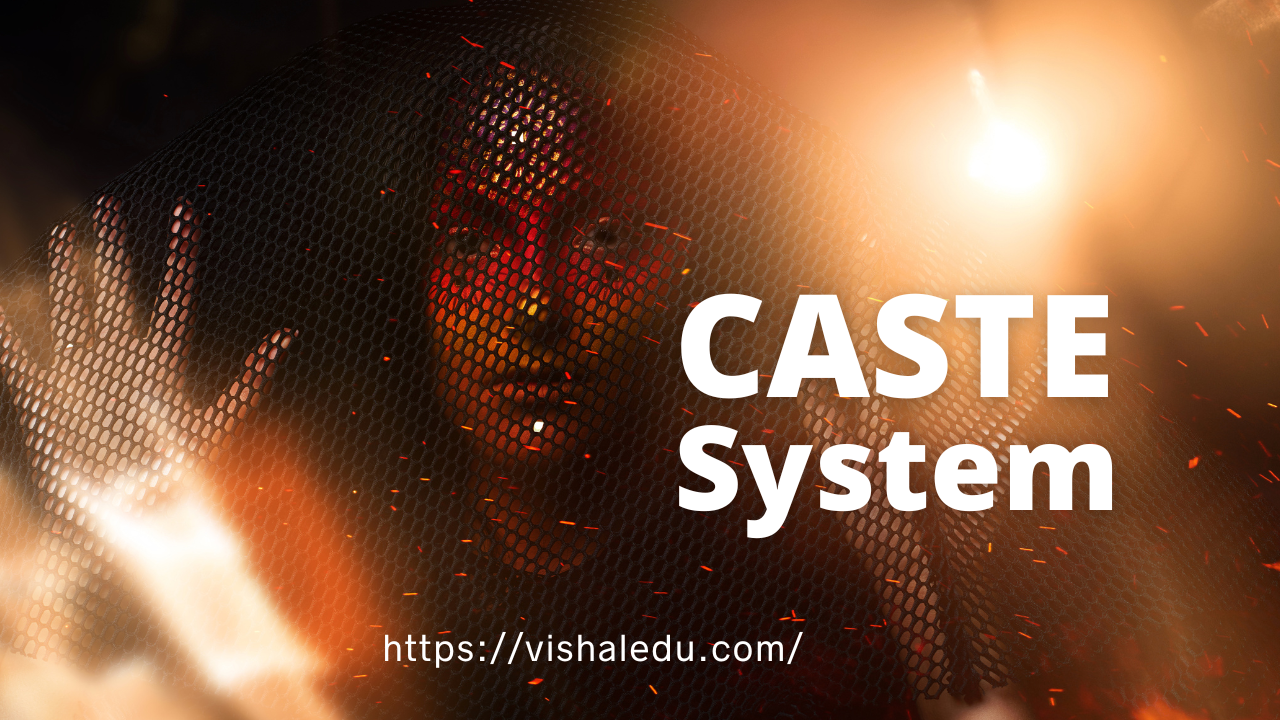Caste System: Meaning, Nature, Types Merits and Demerits
For thousands of years the caste system in Indian sub-continent has been a leading and governing social institution. This institution provides the role of a social construction that rank/segregate people into particular groups based on birth, profession and status. This study aims to investigate the meaning characteristics, types, merits and demerits of the caste system in India.
What is caste system?
The caste system can be defined as a complex and intricate social order that distinguishes into different groups based on their genetic factors transmitted from one generation to the next. These genetic attributes include occupation, social status and personality traits as well.
Varna system is also known as caste system. Castes or Varnas are determined by birth and it is almost impossible for people to change their caste during the course of their lives.
Characteristics and hierarchies’ order
The Indian caste system has built in indigenous hierarchical order and structure having four castes above or below the others. The top most rank/position is given to Brahmins representing religious people among Hindus.
They usually represent the most privileged class of society. After Brahmins, Kshatriyas comes which represent fighters, knights and monarchs, followed by Vaishya’s (farmers, trades and businessman). Shudras (the working class) are placed at lowest order in this hierarchy.
Summary
The caste system is a traditional social grouping. Primarily, it is found in South Asian countries. It divides society into different groups, on the basis of their work (Karma), duty (dharma) and etc. This system has four castes: Brahmins (the religious people and teachers), Kshatriyas (The rulers and warriors), Vaisey’s (The merchants and traders) and Shudras (The service providers and laborer’s). Dalit’s is another caste, who is subjected to extreme discrimination and exclusion. This system of castes commands social status, marriages, professions and living positioning. This system has been condemned for preserving inequality and societal injustice leading to different refine movements and legitimize measures to battle against discrimination.
Besides, this hierarchy social order is Dalit’s, previously known as untouchables, they have been marginalized and discriminated historically. But in this modern world, these things are going to be discouraged. Indian former president, Mr. Ram Nath Kovind was a Dalit and recent president a lady Shri Droupadi Murmu is also from a tribal community.
Endogamy
Same caste marriages are prevalent and still in practice. It is used as tool to strengthen and purify the caste linage. It is widely known as endogamy.
Types of caste system
Traditionally the caste system four key/major form these main castes, i.e. Brahmin, Kshatriyas, Vaishya and Shudra. A part from these main castes, there are thousands of sub-castes or Jaties (localized groups) within these Varna systems.
Jati system
Jati system can be defined as a system that distinct people into subgroups or local castes based on their profession and geographical location. They usually possess cultures, customs, traditions and social order.
Advantages of caste system
Social structure the caste system has provided instrumental role for a structural framework of society. It has been highly useful in maintaining social order and stability.
Division and labor
As the concept of labor breaks down a work process into a number of tasks and activities performed by people or a group of people, caste-band vocations have ensured a division of labor in which each caste specializes a particular skill or trade.
Social welfare
Social welfare is all a soul well-being of a society on whole in which their problems are solved in a best way. Keeping in view the above concept of social welfare, caste-band communities usually provide welfare services to their people at the time of need. These illustrate highlights the positive prospect of the caste system.
Draw backs of the caste system
Social inequality the Varna system eternalizes social disparity with higher orders casts enjoying all the luxuries perks and privileges while lower castes usually face injustice, oppression, imperialism, and discrimination. It divides the society into two crystal clear segments; HAVE AND HAVE NOT.
Following points also highlight the draw backs as well:
Discrimination and untouchability
Historically, the Dalit’s weren’t considered pious rather they were considered impure. That’s why they reminded out of the religion activity and social circle. Resulting, the caste system promoted the practice of untouchability.
Restricts social mobility
Fixed and rigid caste system hinders social mobility, it is a challenging tasks for individuals to improve their socio-economic status by moving upwards in the social starts.
Division and conflicts
The caste system is the leading cause of many conflicts and disputes in the society creating inequality discrimination, financial instability, national unity and society, rather it divides the society into various segments. This thing badly diminishes the economic progress as well.
Pros and Cons
This system is historically practiced is India. It is an intricate and controversial social stratum. It has following pros and cons.
| Pros | Cons |
| It is maintaining the social order and stability in society by performing specific roles. | One of the major cons of this system is the inherent social inequality and discrimination. |
| It is the preserver of cultural identity and continuity. | This caste system is rigid and is a hindrance in social mobility. |
| This system is playing role for communal support and strong community relations. | It is creating economic disparities among the people of society. |
| This system, is leading to expertise in certain fields on the basis of skills. | It is generating the feelings of inferiority complex and helplessness. It is an impediment in national unity. |
Conclusion
The caste system in India is a complex social structure which divides people on the base of their genetics. There are four leading castes as Brahmins, Kshatriyas, Vaishya, and Shudra. Besides, it has its pros and cons as well. Division of labor, social discrimination and untouchability are major drawbacks. Nowadays, a language of substantial stages has been taken to address this grave issue by promoting social harmony and equality among the masses.







